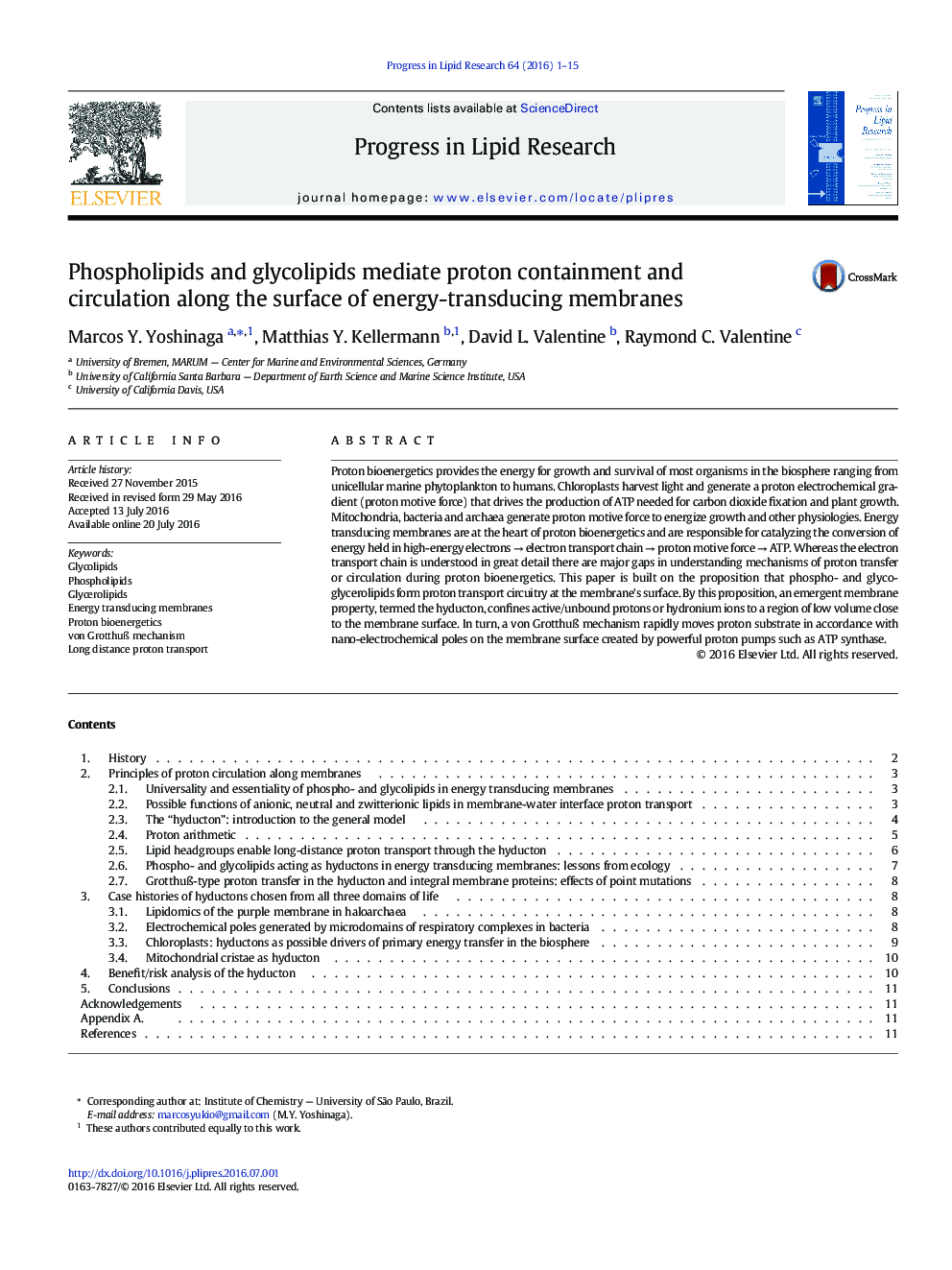| کد مقاله | کد نشریه | سال انتشار | مقاله انگلیسی | نسخه تمام متن |
|---|---|---|---|---|
| 2019077 | 1542166 | 2016 | 15 صفحه PDF | دانلود رایگان |
عنوان انگلیسی مقاله ISI
Phospholipids and glycolipids mediate proton containment and circulation along the surface of energy-transducing membranes
ترجمه فارسی عنوان
فسفولیپید ها و گلیکوالیپید ها باعث مهار پروتون و گردش خون در سطح غشاهای انتقال انرژی می شوند
دانلود مقاله + سفارش ترجمه
دانلود مقاله ISI انگلیسی
رایگان برای ایرانیان
موضوعات مرتبط
علوم زیستی و بیوفناوری
علوم کشاورزی و بیولوژیک
دانش تغذیه
چکیده انگلیسی
Proton bioenergetics provides the energy for growth and survival of most organisms in the biosphere ranging from unicellular marine phytoplankton to humans. Chloroplasts harvest light and generate a proton electrochemical gradient (proton motive force) that drives the production of ATP needed for carbon dioxide fixation and plant growth. Mitochondria, bacteria and archaea generate proton motive force to energize growth and other physiologies. Energy transducing membranes are at the heart of proton bioenergetics and are responsible for catalyzing the conversion of energy held in high-energy electrons â electron transport chain â proton motive force â ATP. Whereas the electron transport chain is understood in great detail there are major gaps in understanding mechanisms of proton transfer or circulation during proton bioenergetics. This paper is built on the proposition that phospho- and glyco-glycerolipids form proton transport circuitry at the membrane's surface. By this proposition, an emergent membrane property, termed the hyducton, confines active/unbound protons or hydronium ions to a region of low volume close to the membrane surface. In turn, a von Grotthuà mechanism rapidly moves proton substrate in accordance with nano-electrochemical poles on the membrane surface created by powerful proton pumps such as ATP synthase.
ناشر
Database: Elsevier - ScienceDirect (ساینس دایرکت)
Journal: Progress in Lipid Research - Volume 64, October 2016, Pages 1-15
Journal: Progress in Lipid Research - Volume 64, October 2016, Pages 1-15
نویسندگان
Marcos Y. Yoshinaga, Matthias Y. Kellermann, David L. Valentine, Raymond C. Valentine,
